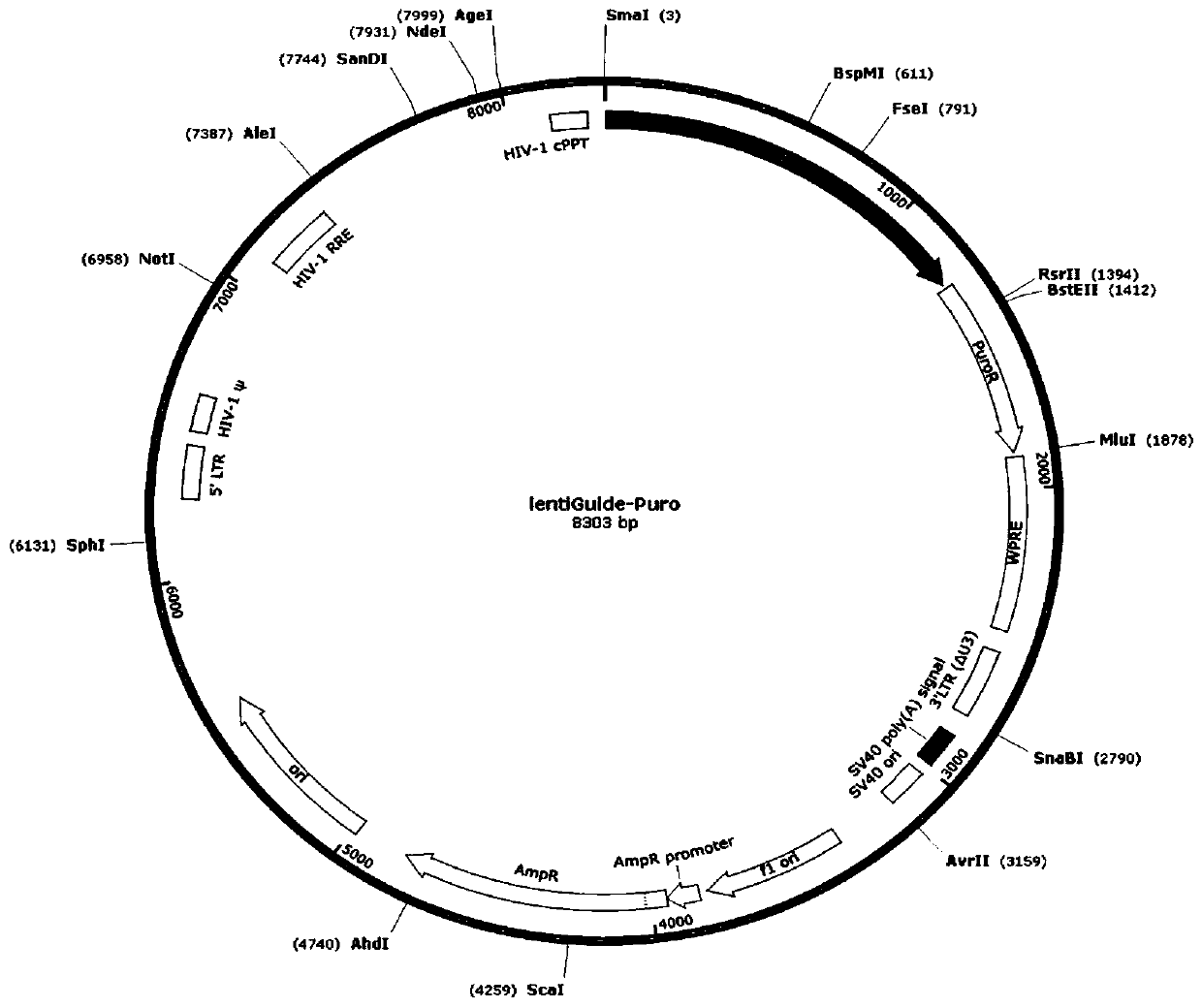Double-specific chimeric antigen receptor T cell as well as preparation method and application thereof
A chimeric antigen receptor and bispecific technology, applied to bispecific chimeric antigen receptor T cells, can solve the problems of weak targeting specificity and low killing efficiency
- Summary
- Abstract
- Description
- Claims
- Application Information
AI Technical Summary
Problems solved by technology
Method used
Image
Examples
Embodiment 1
[0164] Example 1. Preparation of bispecific expression plasmids targeting bispecific chimeric antigen receptors that bind to human NKG2DL and CD47
[0165] Step 1. Retrieval of the amino acid sequence of the bispecific chimeric antigen receptor targeting human NKG2DL and CD47
[0166] The receptor of NKG2DL protein -- the full-length amino acid sequence of NKG2D (as shown in SEQ ID No.1) is searched from the Genbank database of the NCBI of the National Library of Medicine of the United States; The full-length amino acid sequence of SIRPα (the receptor of CD47 protein) (as shown in SEQ ID No.2)
[0167] Step 2. Construction of bispecific chimeric antigen receptors targeting NKG2DL and CD47
[0168] Design of the amino acid sequence and coding nucleotide sequence of the bispecific chimeric antigen receptor that binds to NKG2DL and CD47.
[0169] details as follows:
[0170] The amino acid sequence of the bispecific CAR molecule with bispecific targeting binding to human NKG2D...
Embodiment 2
[0199] Example 2. Isolation and culture of T cells
[0200] Fresh peripheral blood from healthy donors was taken, and fresh peripheral blood mononuclear cells were separated by density gradient centrifugation; then, magnetic beads coupled with anti-CD3 antibody and anti-CD28 antibody (purchased from Invitrogen, USA, product information: Human T-Activator CD3 / CD28, catalog number: 11161D) to enrich CD3 + T cells, specifically, peripheral blood mononuclear cells were diluted to a concentration of (10-30) × 10 6 single cells / ml, then mix the magnetic beads and cells in a culture dish at a ratio of 3:1, and incubate at room temperature for 2 to 3 hours. CD3+ T cells were enriched from Invitrogen (USA). Finally, the enriched CD3+T cells were resuspended in culture medium (purchased from Life Technologies, USA, product information is OpTmizer TM T-Cell Expansion SFM, A1048503), adjusted to cell solubility of 1 × 10 6 cells / ml, and finally cultured in a 37°C, 5% CO2 incubator f...
Embodiment 3
[0201] Embodiment 3. Preparation of virus liquid
[0202] The bispecific CAR expression plasmids obtained in Step 3 of Example 1 respectively targeting human NKG2DL and human CD47, as well as the viral packaging helper plasmids psPAX2 and VSVG, were mixed with polyethyleneimine at a ratio of 10:8:5 Transfection reagent (408727, Sigma) transfection reagent, co-transfect 293T cells (ATCC product, product number: CRL-3216TM); specific packaging plasmid preparation method, see Lenti-X Packaging Single Shots (Takara) instructions; For specific transfection procedures, see the Sigma transfection instructions.
[0203] Replace with complete medium (purchased from Life Technologies, product number: 11995-065) 6 hours after transfection, collect virus supernatant after 48 hours and 72 hours of culture, and centrifuge at 4°C, 3000rpm for 10-15 minutes Afterwards, filter through a 0.45 μm filter membrane, and finally ultracentrifuge at 25,000 rpm for 2 to 3 hours at 4°C to concentrate t...
PUM
 Login to View More
Login to View More Abstract
Description
Claims
Application Information
 Login to View More
Login to View More - R&D
- Intellectual Property
- Life Sciences
- Materials
- Tech Scout
- Unparalleled Data Quality
- Higher Quality Content
- 60% Fewer Hallucinations
Browse by: Latest US Patents, China's latest patents, Technical Efficacy Thesaurus, Application Domain, Technology Topic, Popular Technical Reports.
© 2025 PatSnap. All rights reserved.Legal|Privacy policy|Modern Slavery Act Transparency Statement|Sitemap|About US| Contact US: help@patsnap.com



